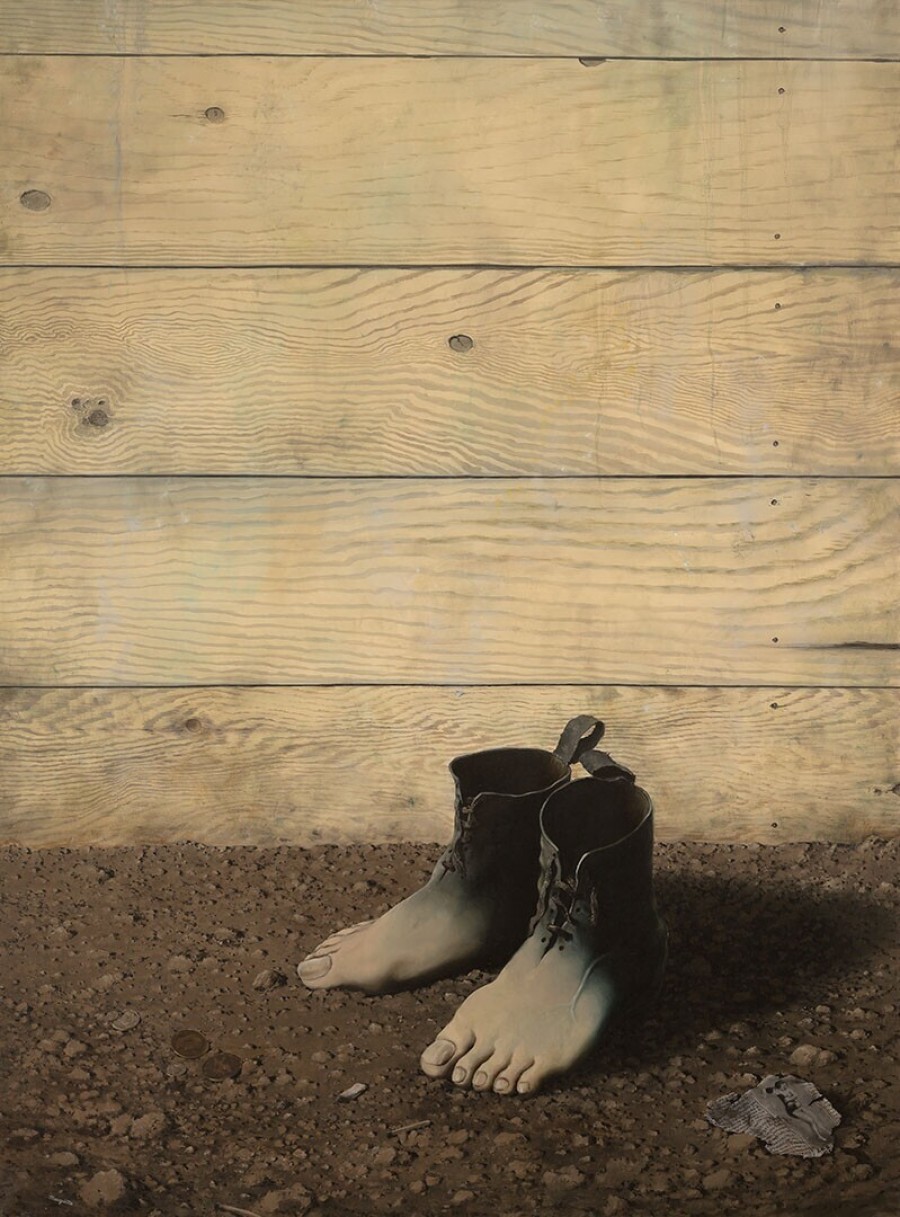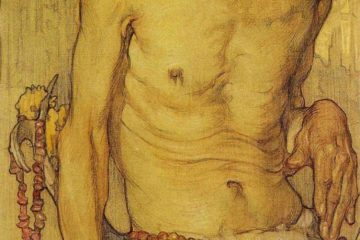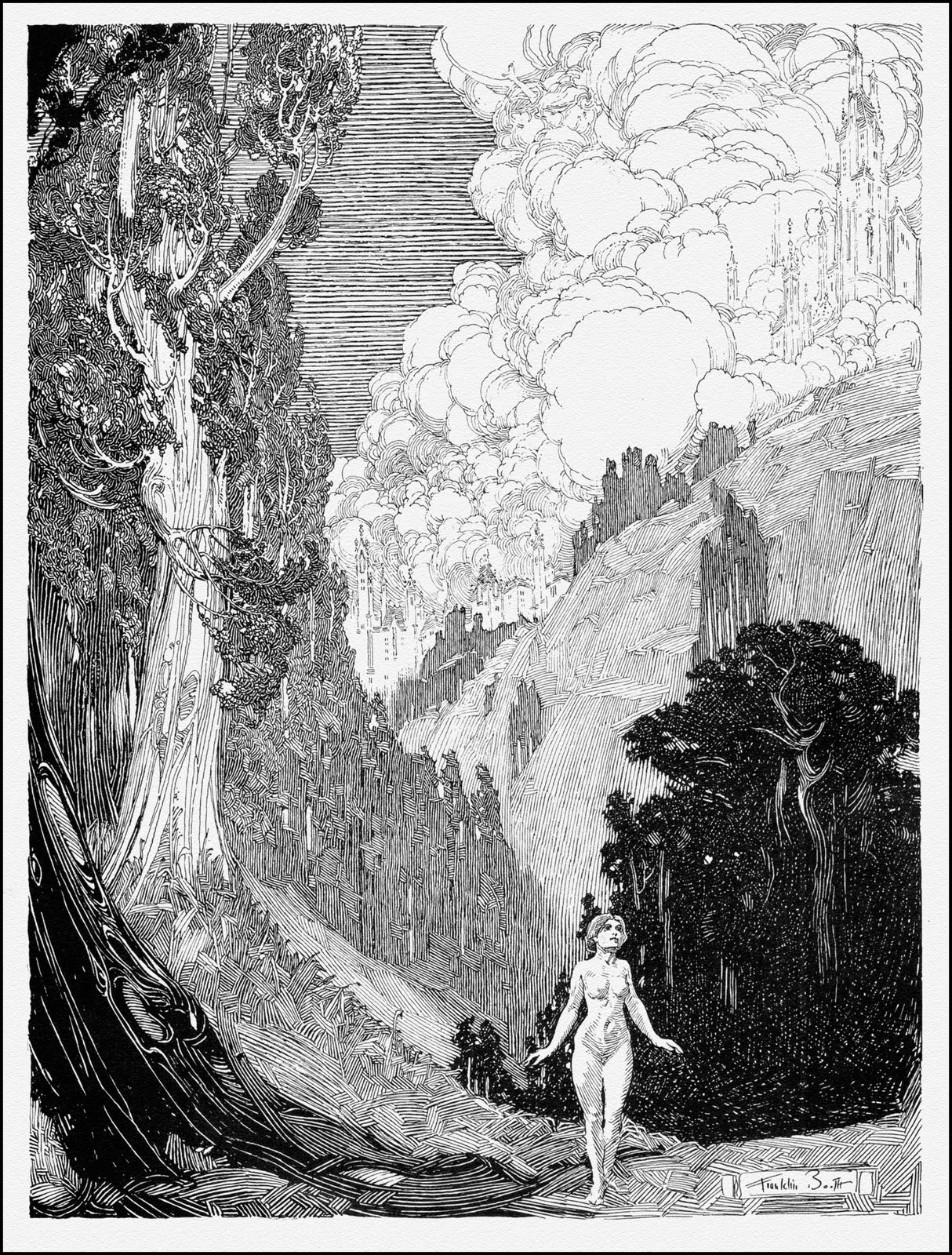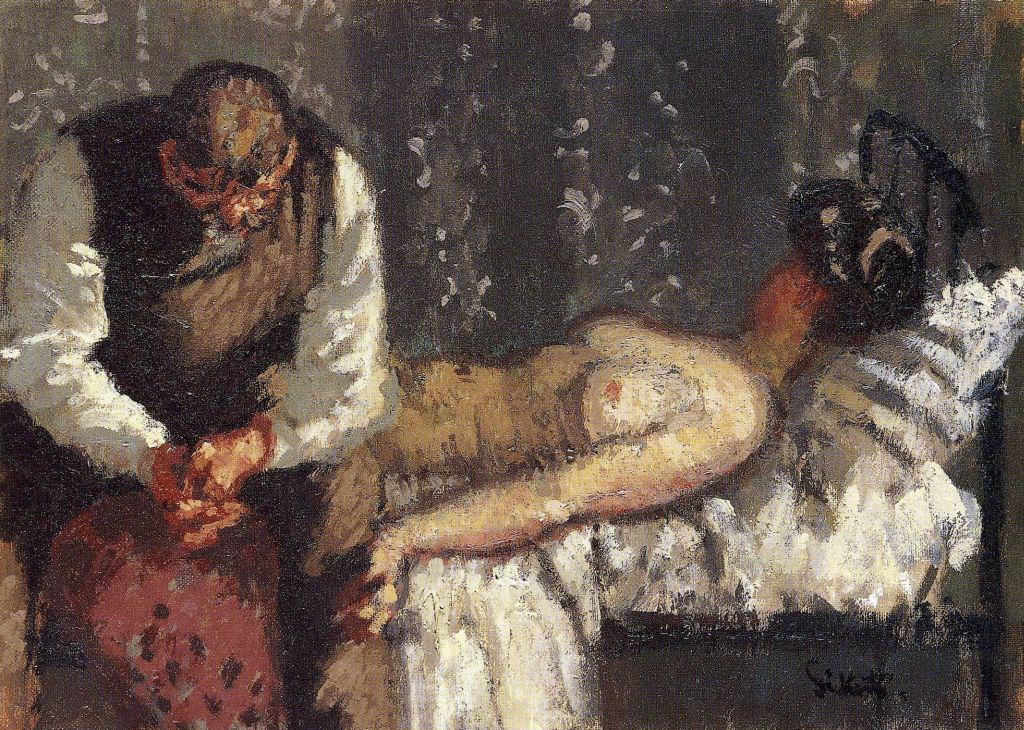It may be clear to some of you who are familiar with my (more or less) past life as an illustrator and fine artist, but I have a bit of an odd streak. That’s what makes us all unique, and I wouldn’t try to be normal for all the money in the world. I think that’s why I am a fan of so many of René Magritte’s paintings.
Where “Le modèle rouge III” is different than many of his pieces is that it is also wonderfully disturbing. Many of his pieces are odd, of course, and their unusual nature is something I have always found fascinating. I have even written about other somewhat disturbing pieces of Magritte’s in the past.
With “Le modèle rouge III,” Magritte gave us a new definition of disturbing, featuring multiple ideas of what it is to be strange and unsettling. The matches and coins on the ground give us a sense that someone was here, and no longer is for possibly nefarious reasons. The torn newspaper clipping features a woman in an odd position, begging us to figure out how she is relevant to the scene.
The centerpiece boots, or feet, depending on how the viewer interprets them, also beg us to figure out what is going on. Is the person gone, with only their boots remaining? Has the person been gradually replaced by the boots, and all that is left to change is each foot? Are the boots being slowly replaced by the person? Was someone obliterated here, or are they being constructed?
Those questions lead to a main tenet of what makes an image disturbing, the idea of otherness, and of turning reality on its head. Magritte does that a lot, with paintings like “Time Transfixed.” But where “Time Transfixed” also asks us to see reality bent, it does not play on twisting of what it means to be human.
It is not just that we have left our boots behind, it is that Magritte seems to be saying that our boots are us and we’ve been left behind. Shoes are one of the things that sets us apart from the animals, and for many people help to define who we are. The ground is rough, and not having shoes would hurt someone’s feet. Magritte did not just paint someone’s leftover boots, he painted the person’s very essence, and it seem like they left in a rush.
Something catastrophic has happened, and not just the boots but the essence has been left behind. There’s a strong sense that someone is no longer here, and they left quickly enough to drop the things they were holding. Scattered on the ground are the things the person was holding, but more than that they have left behind a part of themselves.
To me, it seems like death. Someone was here recently, but now all that is left is the remaining remnant of their humanity. Magritte painted this in 1937, so it was before the Holocaust. When I look at the painting, though, what I see is that type of horror.
It is the sense that someone we loved stood here, and now all that is left is their boots and the remains of their humanity. It is where the final disturbing feeling comes in, that this is a memorial to the lost.
Zoom in on the larger version
See previous editions and subscribe to new articles here.
References
Le modèle rouge III
René Magritte
1937, Oil on canvas
136 cm x 183 cm
Museum Boijmans Van Beuningen, Netherlands



